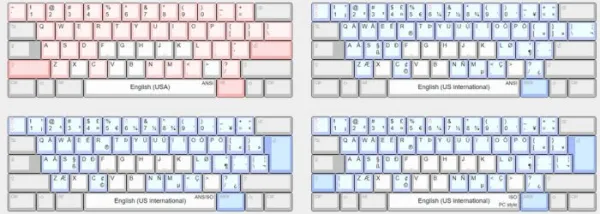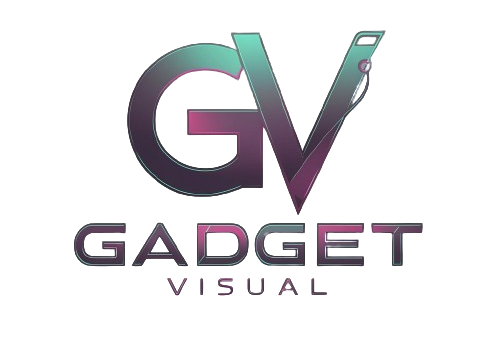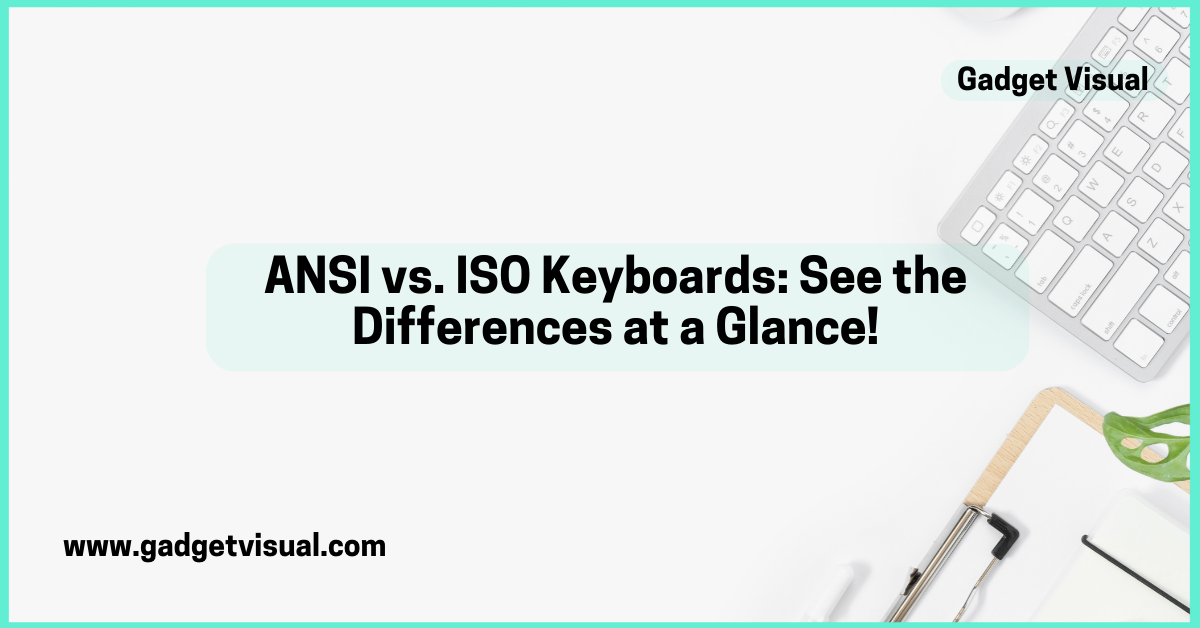When it comes to typing, the keyboard you choose can make a world of difference. If you’ve ever found yourself confused by the terms “ANSI” and “ISO,” you’re not alone. These two keyboard layouts are popular among users worldwide, yet they have distinct features that can significantly impact your typing experience. In this article, we’ll break down the key differences between ANSI and ISO keyboards, helping you make an informed choice that suits your style and needs.

Overview of Keyboard Layouts
At first glance, all keyboards may seem similar, but the layout can drastically affect how you interact with your device. The ANSI (American National Standards Institute) layout is predominantly used in the United States and is characterized by its straightforward design. In contrast, the ISO (International Organization for Standardization) layout is more common in Europe and features a few unique twists that cater to a broader range of languages.
Understanding these layouts is essential for anyone who spends significant time typing—whether for work, gaming, or casual use. A keyboard isn’t just a tool; it’s an extension of your fingers, and choosing the right one can enhance your productivity and comfort.
Key Differences Between ANSI and ISO Layouts
Enter Key Shape and Size
One of the most noticeable differences between ANSI and ISO keyboards is the shape and size of the Enter key. On an ANSI keyboard, the Enter key is rectangular, making it easy to hit without looking. This design is particularly beneficial for users who type quickly or rely on muscle memory.
In contrast, the ISO layout features an L-shaped Enter key. This design can be somewhat disorienting for those accustomed to ANSI keyboards, as it takes up more space and may require a slight adjustment in finger positioning. For many users, this difference is minor; however, for others, it could lead to typing errors or discomfort.
Left Shift Key Configuration
Another key difference lies in the Left Shift key configuration. On ANSI keyboards, the Left Shift key is wider, providing ample space for your fingers to press it comfortably. This wider design can be advantageous for typists who frequently use capital letters or special characters.
On ISO keyboards, however, the Left Shift key is narrower and often split with an additional key next to it (usually a backslash or another special character). While this design allows for more keys overall, it may feel cramped for some users. Those who type quickly might find themselves accidentally pressing adjacent keys, leading to frustration.
Additional Keys
ISO keyboards also include some extra keys that are absent in ANSI layouts. One notable addition is the Alt Gr key (Alternate Graphic), which allows users to access additional characters or symbols—especially useful for multilingual typing. This feature makes ISO keyboards particularly appealing to individuals who frequently switch between languages or require special characters not readily available on ANSI layouts.
Number of Keys
When comparing ANSI and ISO layouts, you’ll notice a slight difference in the number of keys. ANSI keyboards typically have 104 keys, while ISO keyboards usually come with 105 keys due to their additional characters and modified configurations.
While this might seem like a minor detail, it can impact usability—especially if you frequently use shortcuts or specific key combinations in software applications. The extra key on an ISO keyboard can provide quick access to functions that might require multiple keystrokes on an ANSI layout.

Regional Preferences and Usage
The choice between ANSI and ISO layouts often boils down to regional preferences. In North America, ANSI keyboards dominate the market due to their simplicity and familiarity among English speakers. However, in Europe and many other parts of the world, ISO keyboards are more prevalent.
This regional divide isn’t just about aesthetics; it reflects cultural influences on language use and typing habits. For instance, European languages often include accented characters or special symbols that are easier to access on an ISO keyboard thanks to its additional keys.
If you travel frequently or work in multinational environments, understanding these regional preferences can help you adapt quickly to different keyboard layouts.
Typing Experience: Pros and Cons
Pros of ANSI Layout
- Ergonomics: Many users find that the wider Left Shift key on ANSI keyboards provides a more comfortable typing experience.
- Ease of Use: The straightforward design allows for quicker adaptation for new users.
- Availability: ANSI keyboards are widely available in various styles and configurations, making it easy to find one that suits your needs.
- Customization: With a larger market share, there’s a broader selection of customizable keycaps and switches available for ANSI layouts.
Cons of ANSI Layout
- Limited Language Support: If you often type in languages other than English or require special characters frequently, you may find an ANSI keyboard lacking.
- Less Versatile: The simplicity of the layout may not cater well to multilingual users who need quick access to various symbols.
Pros of ISO Layout
- Multilingual Support: The inclusion of keys like Alt Gr allows for easier access to special characters used in many European languages.
- Diverse Design Options: Many manufacturers offer ISO layouts specifically designed for different language markets.
- Enhanced Functionality: The extra key can be beneficial for specific software applications that require additional shortcuts.
Cons of ISO Layout
- Ergonomic Challenges: Some users may find the split Left Shift key less comfortable than its ANSI counterpart.
- Adjustment Period: Transitioning from an ANSI to an ISO keyboard may require time to adapt due to differences in layout.
- Availability Issues: Depending on your location, finding specific models or accessories for ISO keyboards may be more challenging than with ANSI options.

Customization Options
Customization has become a significant aspect of modern keyboard culture. Both ANSI and ISO layouts offer various customization options; however, availability may vary based on popularity.
For those who enjoy personalizing their typing experience—whether through unique keycap designs or mechanical switches—the extensive market surrounding ANSI keyboards often provides more choices. You’ll find a plethora of colorful keycap sets and switch types tailored specifically for these layouts.
ISO keyboards also offer customization options but might have fewer choices depending on your region. If you’re considering customization as part of your decision-making process, it’s worth exploring both markets to see what fits your aesthetic preferences and functional needs best.
Choosing the Right Layout for You
With all this information at your fingertips, how do you decide which layout is right for you? Here are some factors to consider:
Typing Habits
Are you primarily an English typist? If so, an ANSI keyboard might suit you well due to its straightforward design. However, if you frequently type in multiple languages or require special characters often, an ISO layout could be more beneficial.
Ergonomic Preferences
Consider how comfortable each layout feels when typing for extended periods. If possible, try out both layouts before making a decision—this hands-on experience can provide valuable insight into which one feels more natural for you.
Availability of Replacement Parts
If you’re someone who enjoys customizing their keyboard with new switches or keycaps, check what’s available in your area. The availability of accessories can significantly influence your overall satisfaction with either layout.
Choosing between an ANSI and an ISO keyboard doesn’t have to be daunting! By understanding their differences—from layout configurations to regional preferences—you can make an informed decision that enhances your typing experience. Whether you’re a gamer looking for speed or a multilingual user needing versatility, there’s a perfect keyboard out there waiting for you.
So take a moment to assess your typing habits and preferences; after all, investing in the right keyboard is investing in your productivity and comfort! Happy typing!
Additional Tips
Connecting a Logitech keyboard to your MacBook is easy and enhances your typing experience. Start by ensuring your keyboard is charged, then go to your MacBook’s Bluetooth settings. Enable Bluetooth, put your Logitech keyboard in pairing mode, and click “Connect” when it appears. For those interested in minimalist typing efficiency, check out our comparisons of Logitech vs Razer and our guide on gaming keyboard layouts for optimal productivity!
People Also Asked about ANSI and ISO keyboard Answered below
What makes ANSI keyboards different from ISO keyboards?
The key size and arrangement distinguish ANSI and ISO keyboards. ANSI, commonly used in North America, has a smaller Enter key and a unique Left Shift key compared to ISO, widely utilized in Europe.
How does the layout affect typing comfort on ANSI and ISO keyboards?
Typing comfort is influenced by the different key positions in ANSI and ISO layouts. Understanding these differences helps users choose a layout that suits their ergonomic preferences.
Are there specific benefits to choosing either ANSI or ISO keyboards?
Yes, both layouts have their advantages and disadvantages. ANSI may offer broader access to symbols, while ISO provides additional keys for multilingual support. The best choice depends on individual preferences and language needs.
Is it simple to switch between ANSI and ISO keyboards?
Switching between ANSI and ISO keyboards might require some adjustment due to differences in key sizes and positions. However, users can adapt over time with regular use and practice.
Do ANSI and ISO keyboards provide different options for keycap customization?
Certainly. While ANSI keyboards may have a wider range of aftermarket keycap choices, ISO layouts also offer plenty of opportunities for customization. Users can personalize their keyboards according to their preferences.

